How do you choose coffee beans for your particular needs? Excellent question! Maybe you're new to coffee, or perhaps you've been making and drinking it for years until now without putting much thought into which bag you grab at the store.

Whichever camp you fall into, now you're noticing all the jargon and apparent complexity that goes into coffee, and you're wondering if you've been missing out on that perfect cup of joe.
Are coffee beans really all that different from each other? Yes, they are! We wish we could say deciding which coffee beans to buy is a no-brainer, but at the same time, the sheer variety of coffee types out there is what makes this beverage one of the most delightful to consume.
In this article, we're going to demystify the entire process so that you're well-informed and set up for success the next time you're choosing coffee beans.
Why the Right Coffee Beans Matter
There are several reasons coffee lovers put so much time and energy into choosing coffee beans.
Finding the right beans affects:
Overall Flavor and Caffeine Level
The variety of coffee bean you go for -- Arabica beans or Robusta coffee beans -- determines the flavor of your brew, not to mention the caffeine level. Different roast levels make a huge difference here as well.
Flavor Profile
Your coffee's origin -- where your coffee comes from -- also plays a huge role in what you're going to smell and taste when you've finished making your cup.
When the beans were roasted is also very important to the overall coffee experience: You want to make sure you're getting beans that are fresh enough to taste as awesome they possibly can, as the flavor and aroma of coffee degrades over time.
The Planet and the Lives of Coffee Producers
Finally, there's the question of sustainable coffee farming. Where do your beans come from? What methods did the farmers use to produce them, and how will they impact the environment? This concern is becoming more common in the modern world. It's not just about all about taste anymore!
Let's break down the factors discerning coffee drinkers consider when buying their beans.
How To Choose Coffee Beans
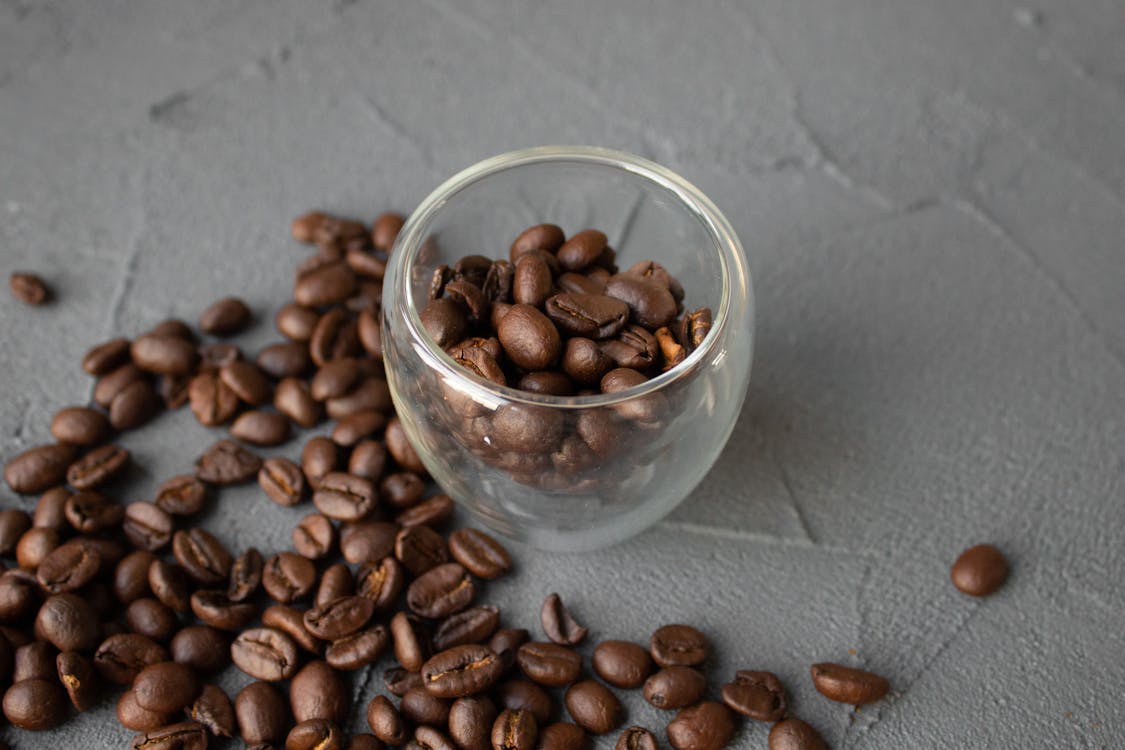
Arabica Coffee Beans vs. Robusta Coffee Beans
At the basic level comes the question of which coffee species will give you your preferred flavor profile. When shopping for commercial coffee beans, you've got two choices: Arabica beans and Robusta beans.
-
Arabica coffee: Arabica beans are the creme de la creme. Often possessing a delicate flavor, they produce a sweet, complex coffee with undertones of sugary chocolate. You may also detect fruit, berry, or wine notes. These beans are harder to grow than the Robusta variety, so Arabica coffees tend to cost more. They also contain less caffeine, so if you're trying to ward off the coffee jitters, this a good coffee to go for.
-
Robusta coffee: Robusta beans can thrive in a variety of climates and so are easier to grow, resulting in a lower price tag. Due to their lower acidity, they have an earthy flavor profile with a heavier body and more of a bitter aftertaste with not much sweetness.
If you're looking for good quality coffee, you'll want Arabica beans. There are different quality levels of Arabica, (it's not just a matter of "Arabica coffee is good - Robusta is bad!"), but for the most part, well, Arabica is good - Robusta is bad.
Roast Freshness

The idea that coffee keeps forever is one of the most famous coffee myths. But the idea that coffee deteriorates and can't be consumed after two weeks is also incorrect. There's a balance to be found here.
Look for a visible printed roast date on your coffee beans. If you don't see one (or if you only see a "best before" date), it's probably because they don't want you to know when those beans were roasted.
What is the best time to buy coffee and consume it? Buy it as freshly ground as possible, and then try to finish it before three weeks after the printed roast date for the best experience.
Coffee enthusiasts agree that the ideal "peak" flavor times are usually between day 7 and 14, which is the standard for any good coffee shop you visit. After day 14, the quality and taste intensity will start to deteriorate, resulting in flat cups and dejected faces.
Keep in mind, though, that depending on when your beans were harvested and prepared, they could technically last up to four weeks, but the flavor will have degraded a lot.
Brewing Method
Whether you're buying whole beans or pre-ground coffee, if you want an enjoyable cup of coffee, it's important to take your preferred brewing method into account. Different brewing methods work best with certain grind levels.
- French Press or Cold Brew: coarse grind
- Machine Drip/Auto Drip: medium-coarse grind
- Pour Over Coffee: medium grind
- Espresso Maker: fine grind
- Turkish Coffee: extra-fine grind
Roast Level
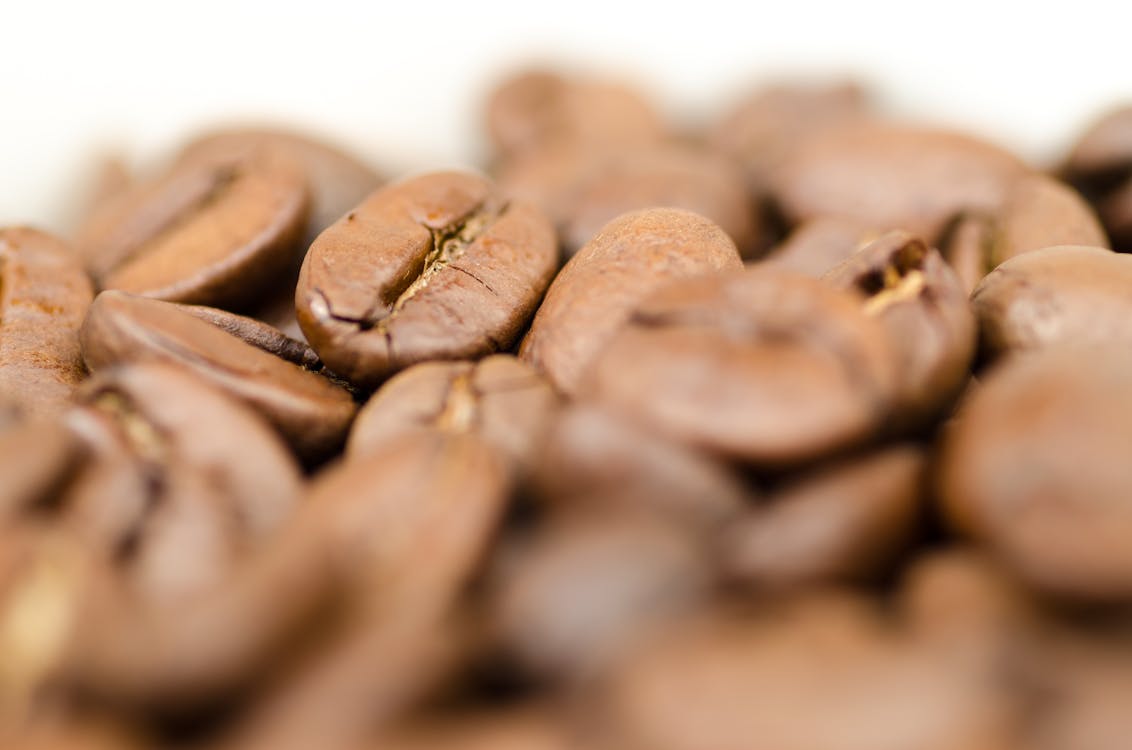
Different brewing methods complement different roast levels as well.
The roast level of your coffee beans has a major impact on the flavor profile, mouthfeel, and tasting notes you'll experience when drinking.
Light roast: A light brown in color, light roast coffee has bright acidity and a vibrant flavor profile with fruity notes. With these roasts, you can really taste the distinctive flavor of the beans, so light roasts make great drip coffee or pour over coffee. There's also more caffeine in a scoop of light roast beans than in a scoop of dark roast beans. Body/mouthfeel is lighter because there are no oils in the coffee at this roast level.
Medium roast: Medium roasts combine the best of both lighter and darker roasts, boasting a mellow, smooth sweetness with chocolatey notes and a good mouthfeel. These coffees aren't as rich as dark roasted beans, but they're also not as acidic and fruity as light roasts. Coffee at this roast level has a perfect home in both pour over coffee or as espresso.
Dark roast: Dark roasts are often described as smoky, deep, and sweet, and you'll find a lovely sheen of oil coating the beans. Gone are the bright, fruity notes of lighter roasts, as the roasting process cooks most of these away along with the acidity. In their place, you'll find more notes of dark chocolate or herbal, earthy flavors.
Dark roasts may not be as bright and complex, but the depth of their flavor delights many a coffee connoisseur. Their charms are most evident in a cold brew, espresso, or as drip coffee. A French press works well with these coffees, too, especially if you like adding a dash of milk to your brew.
Blend or Single Origin
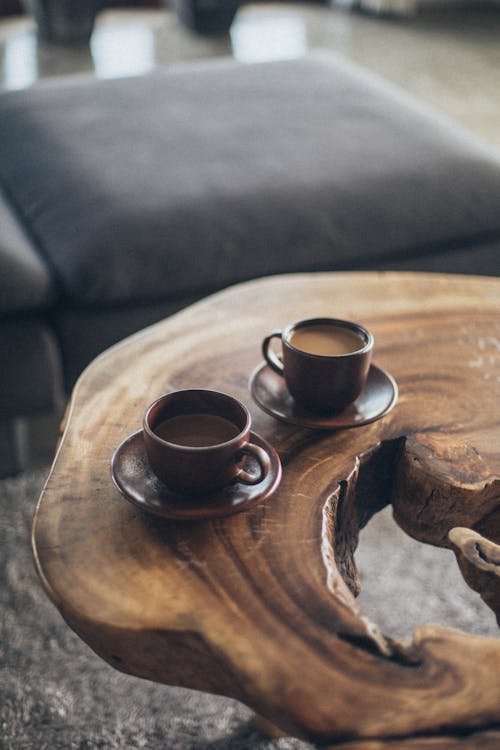
When choosing coffee beans, you'll be faced with another question: single origin, or blend?
A single origin coffee is made from a single recognized geographical area, such as a coffee farm or estate. On the other hand, a blend is just that: a blend of coffees from different regions.
A good single origin coffee allows you to really appreciate the distinctive flavor profile of the beans.
But blends can be wonderfully flavorful and complex with the right mix. Our own blends, such as the African Kahawa Blend, are good examples of how an incredible symphony of flavors can result from a carefully orchestrated blend of beans.
Bean Origin
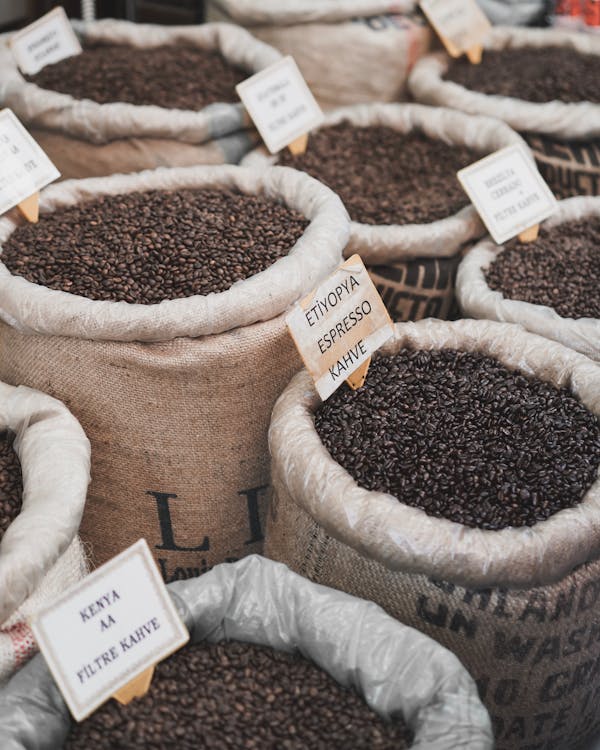
Once you've decided whether you want the distinctiveness of a single origin coffee or the complexity of a blend, it's time to consider the different flavor profiles you'll find from different coffee-producing regions of the world.
Generally, you can expect the following:
South American Coffees
For clean coffees with delicate sweetness accompanied by a bright acidity, South and Central American coffee is the way to go. Brazil, like many other Latin American countries, is famous for producing coffees with a heavier body and peanut flavor.
In Colombia, the tastes have mellowed and appear more often in the form of chocolates, caramels, and toffees. Coffee from Costa Rica (where it's actually illegal to produce anything but 100% Arabica coffee beans) tend to have stronger herbal and earthy flavors, with tropical citrus fruit notes.
We suggest: Latin American Blend, 100% Brazilian Roasted Coffee, 100% Colombian Roasted Coffee
African Coffees
Begin with African coffees if you're looking for fruit-driven tastes and floral scents with bright to intense acidity. Tanzanian coffee is known for its strong citrus notes and medium body with a vibrant, bright flavor profile. In Kenyan coffees, you'll find the citrus notes enhanced with those of berry, while Ethiopian coffee beans have a more distinctive tartness to them.
We suggest: African Kahawa Blend, Kenya AA Plus Green Coffee Beans, Tanzania Peaberry Kilimanjaro Green Coffee Beans
Indian and Pacific Coffees
If you like a coffee to be more full-bodied and earthy, you'll enjoy choosing from the India and Pacific regions. These are often characterized by lower acidity and a luscious, syrupy body combined with herbal and savory tastes that tend to divide people. Sumatran coffee is a classic example of the flavor profile of this region. However, we also have to mention Hawaiian coffee, which is notably creamy and smooth, with a medium body and notes of chocolate and fruit.
We Suggest: India Monsooned Malabar Green Coffee Beans, Indonesia Sumatra Mandheling Grade 1 Green Coffee Beans
Caribbean Coffees
Balanced flavors are the calling card of coffee beans grown in the Caribbean. If you're seeking a rich, smooth brew with mild acidity and notes of smoke and wine, this is the region to focus on.
Altitude
The altitude a coffee plant is grown at also has a strong impact on the flavor profile and body of the brew. Because of this, you will often see the growing altitude provided on a bag of beans or pre-ground coffee. The altitude is followed by "masl," which stands for "meters above sea level." A general rule of thumb is that the higher the altitude a coffee plant is grown at, the sweeter the flavor.
Choose coffee beans grown at specific altitudes for the best experience based on your preferred flavor profile, body and mouthfeel, and acidity. Your taste buds will thank you!
Low-Altitude Coffee - 1,250 MASL
-
lower acidity
-
earthier flavor
-
heavier body
Medium-Altitude Coffee - 1,250-1,500 MASL
-
richer mouthfeel
-
slightly higher acidity
-
sweeter flavor
High-Altitude Coffee - 1,500-2,200 MASL
-
bright acidity
-
luscious mouthfeel
-
complex flavors and aromas, with fruity undertones
Sustainable Coffee Farming

Another thing to consider when choosing coffee beans is whether or not they were produced and traded using Fair Trade methods. Fair Trade pertains to both environmental and social sustainability. This was less of a concern for coffee lovers in the past but has become much more important with growing awareness of the issues associated with unsustainable practices.
Did the coffee producers use sustainable farming methods? Was the drying process of the beans friendly to the environment? Were the coffee farmers compensated fairly for their crops and efforts?
If these questions matter to you, seek out Fair Trade organic coffee that has been produced in the most eco-friendly way possible.
Processing
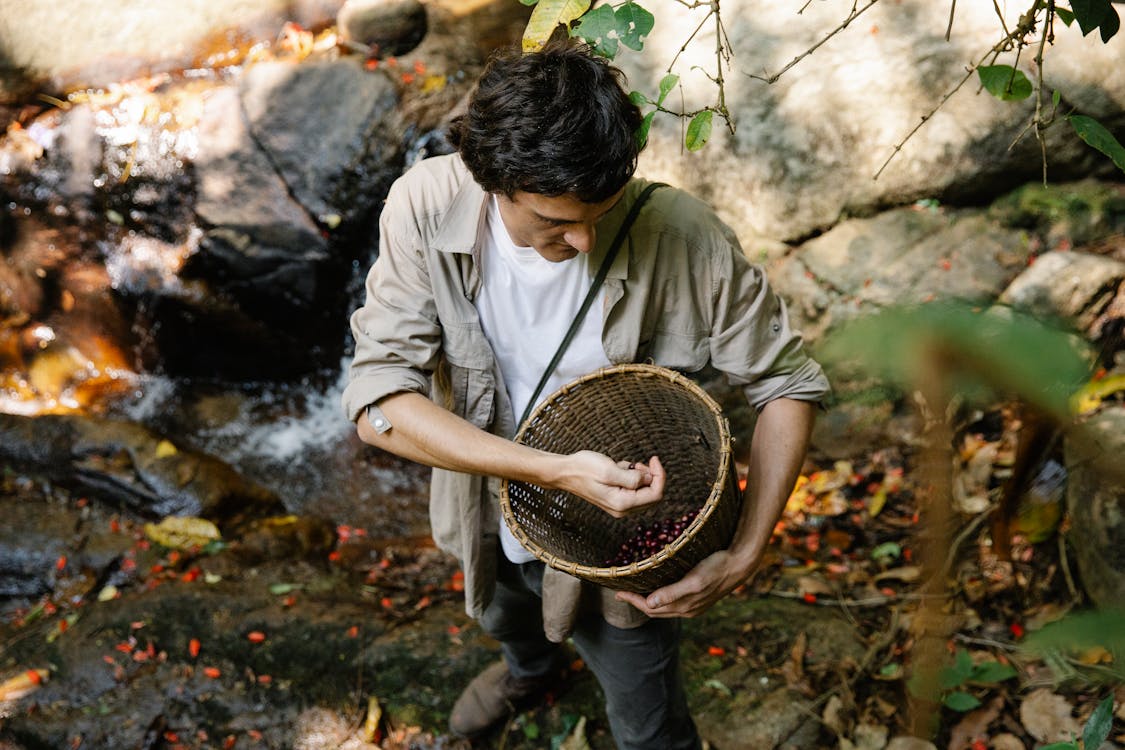
The way a coffee was processed is another notable feature when it comes to making your coffee bean choice.
This will usually be indicated in a basic label of "washed" or "natural" (unwashed) on the coffee menu or bag. This is worth noting since, even when the coffee is the same, you will get a distinctively different coffee experience as a result of these elements.
These are the two most popular procedures, but other options exist, such as honey processed and wet hulled (between washed and natural).
Natural Process
The natural process is the oldest and simplest method of coffee processing. The coffees are dried inside the fruit by being left out under the sun. The natural sugars found in and around the seed are infused into the coffee, which ultimately means a sweeter brew with a lot of body and berry-like flavors
Other names for this process are sun-dried, traditional-dried, cherry-dried, or dry-processed.
Wet Process
A washed coffee, also known as a "wet processed" bean, has had the cherry's outer pulp discarded and then fermented in tanks before being washed and dried.
The process of fermentation, which is a form of decomposition, is the most widely used production approach. It's less prone to defects because the fermentation process is tightly controlled and leads to fewer rejects. The result is frequently a coffee with excellent clarity of flavor while displaying a strong complex acidity to match.
This process involves the use of significant amounts of water, though, which has raised questions about its sustainability, especially in areas prone to water shortages.
Conclusion
So there you have it, folks. Next time you're browsing the menu of your favorite coffee shop or trying to choose coffee beans to use at home, take a look at the information provided and consider what qualities you're looking for in a freshly roasted cup of coffee.
When faced with a large selection of alternatives, the above info may assist you in making better decisions. When you're tired of drinking the same thing all day, every day, this can help you discover a different world of tastes that you never thought possible in coffee.
What type of coffee is calling to you? Let us know in a comment!

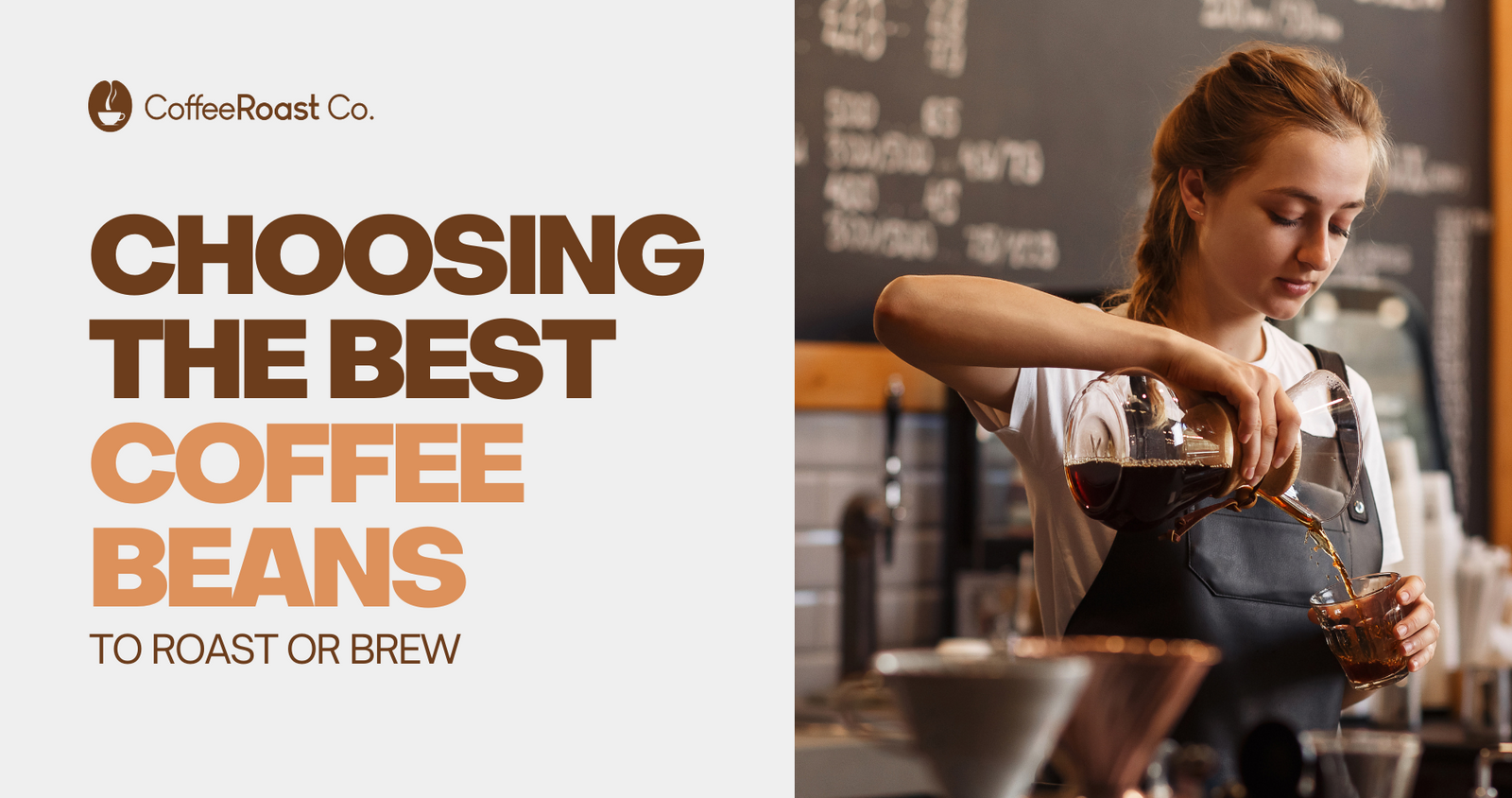



Shumbusho saidi
abril 10, 2024
I’m barista but I’m very happy for your lessons I’m from Rwanda